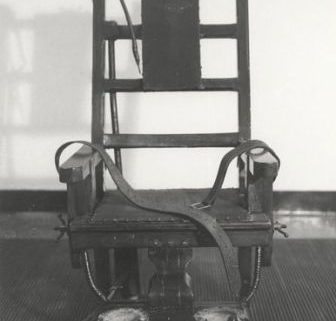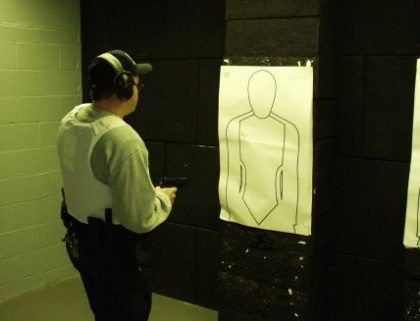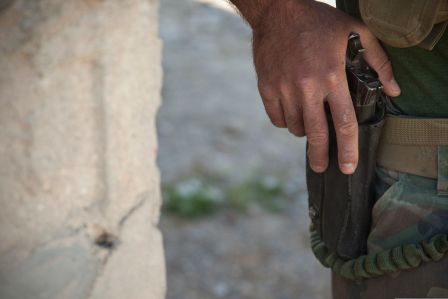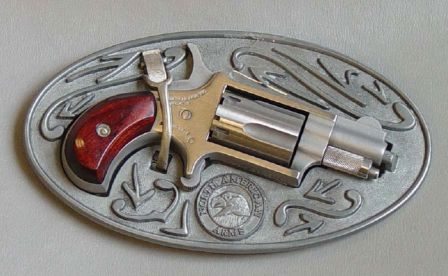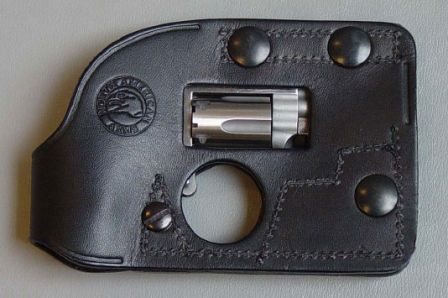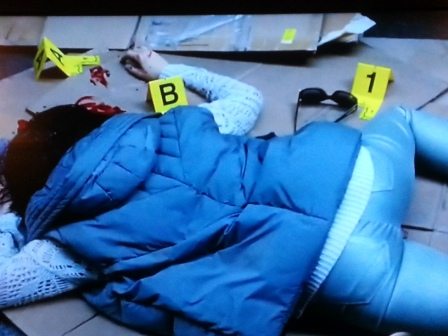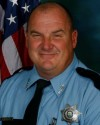It’s finally here! Tomorrow at 12 noon (est) registration for the 2014 Writers’ Police Academy officially opens. We do expect a flurry of activity so please be patient. If you cannot get through at first please try again (and again, if necessary). The registration system is totally automated and we’ve tested it numerous times. It has worked perfectly each time. However, should a problem occur we’ll all be standing by to assist, if needed.
Once you have successfully made it to the registration page, please, please please read and make your selections wisely and carefully. There are special sessions that require sign-ups on the registration form. Once these sessions are full, that’s it. We cannot add additional slots.
Should the event sell out tomorrow, we’ll soon post details about a waiting list.
So, until tomorrow, here’s a look at what you can expect this year. As always, we’ll be adding to the list throughout the coming months.
*Don’t forget, Sisters in Crime has once again offered to pay over half of their members’ registration fees! Not a member? No problem. Everyone is invited to join the group to receive the generous discount.
THURSDAY, September 4, 2014
3:00 P.M. – 5:30 P.M.
2014 WPA Registration Officially Opens – Hotel lobby (follow the signs to the right of the lobby entrance)
*Name tags are required for admission to sessions and workshops.
5:30
Ride-along and jail tour orientation – Hotel (rm TBA)
6:00
Ride-a-long with on-duty patrol officers – Lottery
Jail Tours – Lottery
Airplane Demonstration – Details TBA – (Attendance is by sign-up at registration – first come, first serve)
7:00
WPA Orientation and Announcements – It is important that you attend this session, if at all possible, so you’ll have a better understanding of what to expect throughout this fast-paced and exciting weekend. Those of you participating in the ride-alongs, jail tours, and the visit to the airport for the police airplane demo need not worry about missing information. Simply hop on one of the buses on Friday morning and follow the crowd when you arrive at the police academy.
By the way, this session is a lot of fun, so please do bring your sense of humor!
7:30
Investigation of Felony Murder – Have you got what it takes to investigate an entire criminal case, from start to finish? Well, this intensive, hands-on workshop will definitely test your investigative abilities. Details TBA ~ Instructor Andy Russell
Part 1: Case Assignment/Briefing – Team one and team two
Participation is by sign-up at registration – first come, first serve.
*Team one is comprised of the first 20 people to sign up. Team two is the next 20 to sign up. 40 total participants
FRIDAY
7:30 A.M.
Buses depart from hotel. Please be seated on the buses and ready to go PRIOR to departure time. The WPA schedule is extremely tight and doesn’t allow room to wait for slowpokes, and there are no shuttles running to the academy. Buses depart at precisely 0730.
8:00 – 9:00
Our first surprise. Have your cameras ready, but absolutely NO VIDEOS AT ANY TIME DURING THIS EVENT!
Instructor Joe Yow and staff
9:15
Meggitt (FATS) – live action shoot/don’t shoot scenarios, using real firearms specially tooled for simulation training. This is the same training taught to police officers. Meggitt is intense, but it’s extremely fun. One of the more popular workshops of the WPA.
Driving Simulator – You’ll see how well you can drive an emergency vehicle when the full lights and siren are activated.
EMS ride-a-longs – Take a ride in a real, working ambulance. Ride in the jump seat and see what it’s like with a patient in the back.
Registration for late arrivals – Academy lobby (name tags are required for admission to sessions and workshops)
9:15-1030
1. Domestic Murder ~ Instructor Tracy Fulk
2. Cyber Crime: A look at Cybercrime and how it affects our daily lives, even if we think we are not victims. Statistics, government and private industry response. ~ Instructor Jeff Flinchum
3. Disposing of the Dead Body ~ Instructor Bill Lanning
4. Crime Scene Processing/Evidence Packaging ~ TBA
5. Romance Behind the Badge: Infidelity, cops and cops, cops and nurses, badge bunnies, waffle queens, spouses, divorce, dating, chick magnets, female cops looking for love, LGBT, romance and the ticket. ~ Instructor Secret Service Special Agent Mike Roche
6. Deep Undercover: Former ATF Special Agent Bill Queen discusses how he, while working undercover, spent over two years as a member of one of the most dangerous motorcycle gangs in America.
7. 3rd Alarm Blaze: Assume the role as a firefighter by wearing the protective clothing, feel the force of a water-charged hose line, and participate in a hands-on session where you handle the fire-fighting equipment carried on a fire apparatus. Professional firefighters will be available to explain the complexity and technical aspects of the profession. ~ Instructor David Bullins
8. Firearms 101 ~ ATF Special Agent Rick McMahan
9. Why Good Cops Go Bad: An inside look at cop culture
Investigation of Felony Murder Part 2: The Scene (Team one) – Instructor Andy Russell
10:45 – 12:00 noon
1. Prostitution Sting ~ Instructor Emily Mitchum
2. Women In Law Enforcement ~ Instructor Sgt. Katherine Netter
3. Cyber Crime: A look at Cybercrime and how it affects our daily lives, even if we think we are not victims. Statistics, government and private industry response. ~ Instructor Jeff Flinchum
4. Fingerprinting and the AFIS System ~ Instructor Amy Wilde
5. Romance Behind the Badge: Infidelity, cops and cops, cops and nurses, badge bunnies, waffle queens, spouses, divorce, dating, chick magnets, female cops looking for love, LGBT, romance and the ticket. ~ Instructor Secret Service Special Agent Mike Roche
6. Footwear: The most overlooked evidence ~ Instructor Robert Skiff, Sirchie Training Manager
7. Microbial Forensics: Using microorganisms as weapons ~ Dr. Denene Lofland
8. Deep Undercover: Former ATF Special Agent Bill Queen discusses how he, while working undercover, spent over two years as a member of one of the most dangerous motorcycle gangs in America.
9. 3rd Alarm Blaze: Assume the role as a firefighter by wearing the protective clothing, feel the force of a water-charged hose line, and participate in a hands-on session where you handle the fire-fighting equipment carried on a fire apparatus. Professional firefighters will be available to explain the complexity and technical aspects of the profession. ~ Instructor David Bullins
Investigation of Felony Murder Part 2: The Scene (Team 2) ~ Instructor Andy Russell
Lunch 12:00-1:00
1:00-2:15
1. Domestic Murder – Instructor Tracy Fulk
2. Prostitution Sting – Instructor Emily Mitchum
3. TSA/Airport Security – Instructor Mike Macintosh
4. Fingerprinting and the AFIS System – Instructor Amy Wilde
5. Footwear: The most overlooked evidence ~ Instructor Robert Skiff, Sirchie Training Manager
6. Microbial Forensics: Using microorganisms as weapons ~ Dr. Denene Lofland
7. Researching Exotic Crimes: Crime writers are always looking for unique situations and motivations. This seminar covers unnerving perversions and paraphilias, and discusses how to find sources and interview “unusual” people. ~ Dr. Katherine Ramsland
8. Why Good Cops Go Bad: An inside look at cop culture
9. Memoirs of An Undercover Detective: Retired NYPD Detective Marco Conelli sheds his masks to reveal crime solving techniques and survival in the organized crime control bureau. Marco goes undercover in delivering the facts to help your novel…with attitude to spare.
Investigation of Felony Murder Part 3: Developing the Case/Interviews (Team One) ~ Instructor Andy Russell
2:30 – 3:45
1. Aerial Surveillance – Instructor Capt. Randy Sheppard
2. Women In Law Enforcement – Instructor Sgt. Katherine Netter
3. TSA/Airport Security – Instructor Mike Macintosh
4. Firearms 101 ~ ATF Special Agent Rick McMahan
5. Researching Exotic Crimes: Crime writers are always looking for unique situations and motivations. This seminar covers unnerving perversions and paraphilias, and discusses how to find sources and interview “unusual” people. ~ Dr. Katherine Ramsland
6. Broken Bones, Ballistics & Backdrafts: Technical Stuff That Writers Get Wrong – Fiction readers are getting more sophisticated all the time, and it’s a writer’s job to get the details correct. New York Times bestselling author John Gilstrap brings his thirty years of experience as a firefighter, EMT, safety engineer and hazardous materials specialist to the classroom in a lively, interactive session to teach the basics of projectile ballistics, fire behavior, how explosives work, and what makes hazmats hazardous. What actually happens when a person gets shot or stabbed? Do silencers really work? What’s the difference between a fire, a deflagration and a detonation? These and many other questions will be answered. Note: This presentation contains graphic imagery. ~ John Gilstrap
7. Policing “Back in the Day:” What if your book takes place a few decades ago, or, more likely, what if your work involves flashbacks or cold case scenarios? Laws, procedure, and equipment have changed drastically over the years. Don’t be caught inserting or eliminating that one minor detail that tears the authenticity right from the pages of your story ~ Lt. David Swords
8. Firearms Forensics: How and why bullets do what they do ~ Instructor Dave Pauly
Investigation of Felony Murder Part 3: Developing the Case/Interviews (Team Two) – Instructor Andy Russell
4:00- AT Auditorium
Lisa Gardner – From Fact to Fiction: How to Turn Chilling Research into a Thrilling Novel
5:35
Buses depart for hotel
6:30 – 7:00
Cash bar
7:00 – 8:30
Reception at Marriott Hotel – Sponsored by Sisters in Crime National
9:00
Crime Scene Light Sources – Marriott Hotel parking lot
Instructors Andy Russell and Bill Lanning
Saturday, September 6, 2014
7:30
Buses depart from hotel. Please be seated on the buses and ready to go PRIOR to departure time. The WPA schedule is extremely tight and doesn’t allow room to wait for slowpokes. We cannot wait for anyone, and there are no shuttles running to the academy.
8:00 – 8:30
TBA
8:45
Meggitt (formerly FATS)
Driving Simulator
EMS ride-a-longs
8:45-10:00
1. Suspicious Fire Deaths – Instructor Jerry Coble
2. Building Searches – Instructor Capt. Randy Sheppard
3. Disposing of the Dead Body – Instructor Bill Lanning
4. K9 Demonstration – Details TBA
5. Police Gunfighting ~ ATF Special Agent Rick McMahan
6. Murder Typology: Varieties of Multiple Murder – Sort out the confusion over how to decide what makes a multiple killer into a serial, spree, or mass murderer, focusing on methods, motives, and state of mind. ~ Dr. Katherine Ramsland
7. Special Ops – What Are They Good For?: K9, water/dive, SWAT, bike patrol, and more
Investigation of Felony Murder Part 4: Dealing with Suspects/Interrogations (Team one) – Instructor Andy Russell
10:15 – 11:30
1. Self Defense For Women – Instructor Cpl. Dee Jackson
2. The First Five Minutes of a Code Blue – Instructor Joe Yow
3. Crime Scene Processing/Evidence Packaging – Instructor TBA
4. K9 Demonstration – Details TBA
5. Real Cops for Real Writers: The Psychology of Cops ~ Instructor Secret Service Special Agent Mike Roche
6. Presumptive Blood Testing ~ Instructor Robert Skiff, Sirchie Training Manager
7. Broken Bones, Ballistics & Backdrafts: Technical Stuff That Writers Get Wrong – Fiction readers are getting more sophisticated all the time, and it’s a writer’s job to get the details correct. New York Times bestselling author John Gilstrap brings his thirty years of experience as a firefighter, EMT, safety engineer and hazardous materials specialist to the classroom in a lively, interactive session to teach the basics of projectile ballistics, fire behavior, how explosives work, and what makes hazmats hazardous. What actually happens when a person gets shot or stabbed? Do silencers really work? What’s the difference between a fire, a deflagration and a detonation? These and many other questions will be answered. Note: This presentation contains graphic imagery. ~ John Gilstrap
8. Equivocal Death Investigations: Manners, Causes and Mechanisms ~ Dave Pauly and Dr. Katherine Ramsland
Investigation of Felony Murder Part 4: Dealing with Suspects/Interrogations (Team Two) – Instructor Andy Russell
Lunch 11:30 – 12:45
12:45 – 2:00
1. Suspicious Fire Deaths – Instructor Jerry Coble
2. Underwater Evidence Recovery – Instructor Lieutenant Cameron Piner
3. Self Defense For Women – Instructor Dee Jackson
4. The First Five Minutes of a Code Blue – Instructor Joe Yow
5. Real Cops for Real Writers: The Psychology of Cops ~ Instructor Secret Service Special Agent Mike Roche
6. Presumptive Blood Testing ~ Instructor Robert Skiff, Sirchie Training Manager
7. Murder Typology: Varieties of Multiple Murder – Sort out the confusion over how to decide what makes a multiple killer into a serial, spree, or mass murderer, focusing on methods, motives, and state of mind. ~ Dr. Katherine Ramsland
8. Memoirs of An Undercover Detective: Retired NYPD Detective Marco Conelli sheds his masks to reveal crime solving techniques and survival in the organized crime control bureau. Marco goes undercover in delivering the facts to help your novel…with attitude to spare.
Investigation of Felony Murder Part 5: Developing the Prosecution Summary (Team One) – Instructor Andy Russell
2:15 – 3:30
1. Underwater Evidence Recovery – Instructor Lieutenant Cameron Piner
2. Building Searches – Instructor Capt. Randy Sheppard
3. Medical Examiner – Details TBA – Instructor Jacque Perkins
4. EMS and Crime Scene – Instructor Joe Yow
5. Police Gunfighting ~ ATF Special Agent Rick McMahan
6. Cold Cases: Hits and Misses ~ Dr. Katherine Ramsland, Dave Pauly, and Robert Skiff
7. Special Ops – What Are They Good For?: K9, water/dive, SWAT, bike patrol, and more
8. Policing “Back in the Day:” What if your book takes place a few decades ago, or, more likely, what if your work involves flashbacks or cold case scenarios? Laws, procedure, and equipment have changed drastically over the years. Don’t be caught inserting or eliminating that one minor detail that tears the authenticity right from the pages of your story ~ Lt. David Swords
Investigation of Felony Murder Part 5: Developing the Prosecution Summary (Team Two) – Instructor Andy Russell
4:00 – AT Auditorium
Alafair Burke – Topic TBA
5:35
Buses depart for hotel
6:30
Book store opens
6:30
Cash bar
7:00 – 8:30
Banquet, awards, silent auction and raffle, and announcements. You must present your ticket to enter the banquet room
8:30
An evening with Michael Connelly
*Book signings with featured guests and presenters immediately after the conclusion of banquet activities
Sunday, September 7, 2014
9:00
Investigation of Felony Murder Part 6: Court Presentation
Team One and Team Two ~ Instructor Andy Russell
Judge and Prosecutor TBA
10:00 – Noon
Debriefing panel – All Available Instructors
The debriefing panel has often been described as the best session of the entire event. It’s where you have the opportunity to address the panel of experts, asking questions pertaining to your work in progress, about police officers, detectives, sheriffs, police chiefs, crooks, thugs, thieves, and well, pretty much anything related to the world of cops and robbers.
You’ll definitely want to bring your sense of humor and a tissue or two. You’ll need both.
12:00 Noon
2014 WPA staff officially signs 10-42, off duty
* The WPA schedule remains a work-in-progress until just a few weeks prior to the event. Even then it’s subject to change due to the unpredictable nature of law enforcement. Should an emergency occur that affects the schedule/program, we will do everything we can to substitute another equally exciting workshop(s). Check back to view changes to the schedule, if any. We often add new workshops as they become available.
Session room numbers will be available a bit closer to the event.




